 The roof often goes without notice, greatly underappreciated for its contribution to protecting your house and family. Roofs only account for roughly 5 percent of the building cost of a home but protect the other 95 percent of your investment from the sun, rain, wind and other forces that can damage your home and belongings.
The roof often goes without notice, greatly underappreciated for its contribution to protecting your house and family. Roofs only account for roughly 5 percent of the building cost of a home but protect the other 95 percent of your investment from the sun, rain, wind and other forces that can damage your home and belongings.
Often left unattended for long periods of time, the roof is subject to damage that can lessen its effectiveness. So taking care of the roof is one of the best decisions you can make regarding your home, and a little knowledge can provide you with the tools you need.
Take a Look Up
Regular inspections, along with some basic maintenance, can help prevent leaks, lower your energy bill and add years to the life of the roof. Visual inspections should take place every six months to a year, and should be done both outdoors and indoors.
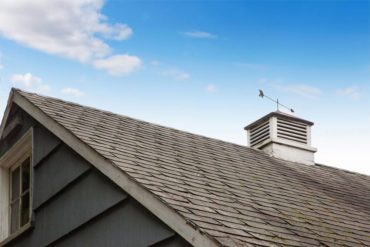 Outdoor inspections are easy to perform and often don’t require the inspector to go onto the roof at all. Walking on the roof during inspection can put you at risk of damaging it, as well as injuring yourself. A simple pair of binoculars and an unobstructed vantage point is all that’s needed in most cases and will take up less than a half hour.
Outdoor inspections are easy to perform and often don’t require the inspector to go onto the roof at all. Walking on the roof during inspection can put you at risk of damaging it, as well as injuring yourself. A simple pair of binoculars and an unobstructed vantage point is all that’s needed in most cases and will take up less than a half hour.
“You’ll want to look for debris buildup, like tree branches,” said Morgan Hanley, owner of Hanley Construction Inc. “Also, you should look for missing and damaged shingles.”
Worn shingles, loose or missing shingles or tiles, loose nails, dark patches and an excess of granules in the rain gutters are often good indications of whether the roof needs cleaning, repairs or a combination of both.
Indoor inspections can prove more difficult and usually require the inspector to venture into the attic. When doing an indoor inspection, you should look for things such as obvious leaking into the attic, as well as around vents and the chimney. Sagging decking between the rafters and outside lighting that can be seen through the roof are also clues there’s a problem. Look for mold caused by improper ventilation. If any of these are occurring, consider repairing or replacing your roof, as the damage has moved inside your home and will continue to get worse.
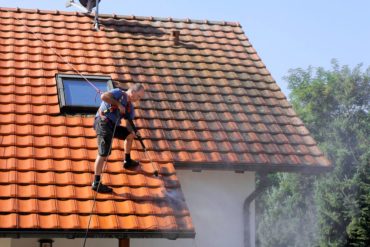 Many of the problems that arise can often be attributed to the lack of a simple inspection and routine maintenance. Proper roof inspection and maintenance not only benefits the roof but also the rest of the house.
Many of the problems that arise can often be attributed to the lack of a simple inspection and routine maintenance. Proper roof inspection and maintenance not only benefits the roof but also the rest of the house.
Maintenance Is Key
Inspecting the roof is extremely important but performing regular maintenance is even more so. Spending time to clean the roof and fix little problems can save the homeowner from spending huge amounts of money to replace it.
“Homeowners should clean their roof between one and four times a year, depending on their location,” Hanley advises. “I recommend that you use a harness and tie-off to roof anchors when up on the roof cleaning.”
Before making a decision to climb up and clean it yourself, the major consideration is the type of roof you have. Steep-sloped roofs and wet, metal ones can be particularly hazardous so make sure you are taking the proper precautions.
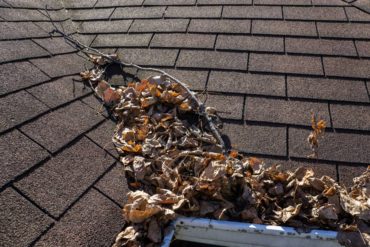 Many people don’t realize their home’s location plays a significant role in the amount of debris that ends up on the roof. If your house is in an area with a grove of trees around it, chances are there may be an excess of leaves or branches that have fallen on the roof. Near the water, clamshells can be a problem, as pesky birds may drop them on the roof.
Many people don’t realize their home’s location plays a significant role in the amount of debris that ends up on the roof. If your house is in an area with a grove of trees around it, chances are there may be an excess of leaves or branches that have fallen on the roof. Near the water, clamshells can be a problem, as pesky birds may drop them on the roof.
Hanley knows from experience that regularly cleaning a roof will extend its life.
“Wait until the weather has been dry for a while before cleaning your roof,” he recommends. “Start at the top of the roof. You can use a gas-powered leaf blower to blow the debris off the roof and into the gutters.”
Before blowing the debris into your gutters, plug the downspouts to avoid clogging them up. For large pieces of debris, such as a tree branch or even a child’s toy, simply pick them up to remove them.
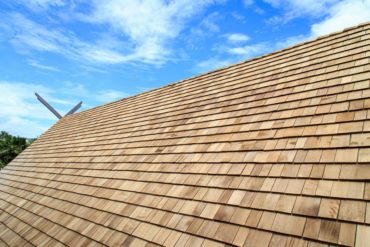 While inspecting or cleaning the roof, you may discover signs that it needs attention. Be on the lookout for problems like missing, curled or loose shingles as well as small leaks. If you notice any problems, you should take care of them immediately. However, keep in mind that unless you have some knowledge of roofing, attempting those repairs on your own may lead to further damage and cause more problems in the long run.
While inspecting or cleaning the roof, you may discover signs that it needs attention. Be on the lookout for problems like missing, curled or loose shingles as well as small leaks. If you notice any problems, you should take care of them immediately. However, keep in mind that unless you have some knowledge of roofing, attempting those repairs on your own may lead to further damage and cause more problems in the long run.
Time to Move On
If your roof is close to or has seen its final rainy season, it’s time to think about investing in a new one. This can be a daunting task, since there are as many materials available as there are roofers to do the work. Choosing a quality roofing material is one of the most important decisions you’ll make, and will ultimately create a lasting impact on both the look and the value of your home.
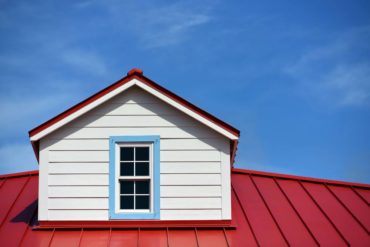 Composition (asphalt shingles), cedar shakes, tile and metal are some of the many choices available. Each has distinct advantages and disadvantages, and you can’t go wrong with any of them as long as you choose a good-quality product.
Composition (asphalt shingles), cedar shakes, tile and metal are some of the many choices available. Each has distinct advantages and disadvantages, and you can’t go wrong with any of them as long as you choose a good-quality product.
Composition roofs typically last between 20 to 30 years, depending on the quality and the home’s location, and are usually the most inexpensive roofing type. They are made of mineral granules and waterproof asphalt that is added to a mat made from fiberglass, wood or cellulose.
Composition roofs are very economical but that doesn’t mean they lack features or function. You can now purchase composition shingles that are copper impregnated to prevent algae and moss buildup, providing extra adhesion so that powerful 130 mph winds can’t blow them off. When installed properly and maintained, composition roofs are durable and long-lasting.
Cedar shakes are more common in this area despite having a bad reputation for quick deterioration and other problems. Many of the challenges can be attributed to poor installation, poor quality shakes or a combination of both.
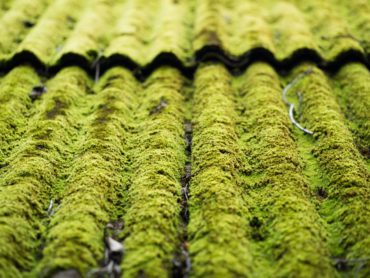 “Cedar shakes have gotten a bad reputation but are still a good option if the material used is quality material,” Hanley says. “Many people like shakes for the Northwest look.”
“Cedar shakes have gotten a bad reputation but are still a good option if the material used is quality material,” Hanley says. “Many people like shakes for the Northwest look.”
This roof type also requires a routine maintenance schedule and may be affected by insects, mold or rot if not taken care of properly. You can now treat cedar shakes for antirot, helping to prevent some of the problems that can occur, but that’s not a replacement for good maintenance.
Cedar shakes are more expensive than composition shingles but provide very sound insulation and ventilation to your home because they are made of a porous, organic material. Many jurisdictions require homes with cedar shakes to be treated with fire retardants, as cedar is more likely to catch fire than other types.
Tile roofing is not as common but still proves to be a very viable option. Made from clay, slate or concrete, tile has high durability and lifespan. Tile roofing comes in a wide variety of shapes, weights, sizes and colors.
The main drawback is that it’s a heavy material and some roofs may not be able to support the weight. It is best to have some sort of reinforced structure when using tile roofing.
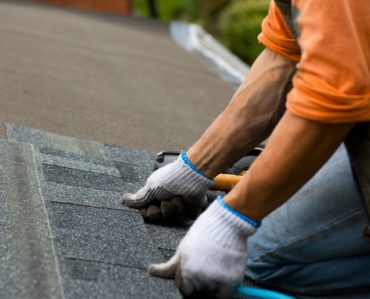 Metal roofs are more expensive than composition roofs but last much longer and require less maintenance. They can be made to resemble shingles or tiles, and have a clean, appealing look. Metal roofs are also lightweight and resistant to fire, and can be installed on both structural and architecturally designed roofs.
Metal roofs are more expensive than composition roofs but last much longer and require less maintenance. They can be made to resemble shingles or tiles, and have a clean, appealing look. Metal roofs are also lightweight and resistant to fire, and can be installed on both structural and architecturally designed roofs.
“I like metal roofs for the area because of the rain,” Hanley says. “They last forever, and many come with a lifetime warranty. They generally last the life of the home.”
Metal roofs are generally made from copper, zinc, stainless steel, aluminum and galvanized steel. They are ideal for warmer climates because they reflect heat, reducing cooling costs significantly.
Call in the Professionals
Whichever roofing material you choose, finding a quality roofer is even more important than choosing a material. Without proper installation, even the most expensive type of roof will not be able to hold its own against the weakest of storms.
Not every roofer is equal, cautions Hanley, saying that obtaining a roofing license is easy if you have the money.
“You can be a licensed roofer in a week. There’s no test. If you have the cash, you’re in,” he warns.
The Kitsap Building Association (kitsapbuilds.com) has a list of roofers in the area and can help in your search to find a good roofer. Make sure the roofers you hire have a good record, along with positive references. Check with previous customers or ask for some pictures and details of their previous jobs.
Roof replacements usually come with a free estimate and charge by the job. Repair is generally billed based on a set hourly price and the cost of materials.
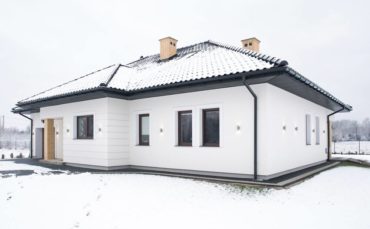 Hanley warns potential customers to never pay a roofer (or any contractor) upfront for the work. When a roofer asks for all the money upfront, it is generally a sign of bad credit, and there is always a chance the company may run off with your money without doing the work. A 15 percent deposit is customary.
Hanley warns potential customers to never pay a roofer (or any contractor) upfront for the work. When a roofer asks for all the money upfront, it is generally a sign of bad credit, and there is always a chance the company may run off with your money without doing the work. A 15 percent deposit is customary.
Taking time every year to keep your roof in prime condition is beneficial not only to your home but to those who live in it. Take precautions in every decision you make regarding your roof, from cleaning it to hiring a roofer to fix it.
The extra time you spend will inevitably be advantageous. Roofs may finally get the attention and respect they deserve, and you’ll be able to feel comfortable and worry-free in your home.
Roof Adversaries
Sun: The sun’s heat and ultraviolet rays can contribute to the roof wearing out prematurely. Some roof types are better at reflecting the sun, but in most cases, not much can be done to prevent this damage from occurring.
Rain: While a roof is meant to protect a house from rain, when rain gets beneath roofing, it can cause damage to the roof structure and to the inside of the house due to leaking. Making sure that your roof is functioning properly is the best thing you can do to prevent damage from the rain.
Wind: Extremely heavy wind can remove a roof from a house. Normally, wind can weaken a roof that was installed poorly, allowing debris and moisture to get beneath and cause damage.
Ice and snow: These can lead to ice damming, which causes the roofing material to be lifted, causing leaks. Ice damming is usually temporary and goes away after it thaws.
Trees and debris: Limbs, pinecones, leaves and other things that fall onto the roof can cause damage. Holes, loosened shingles and excessive shingle granule removal can occur, as well as clogs and damage to gutters. Not much can be done to prevent tree parts from falling on the roof other than keeping the tree trimmed. Remove limbs and leaves from the roof, and keep the gutters clear from clutter. Some products are available to treat and prevent ice damming but often the best remedy is to wait.
Moss and algae: When moss and algae are allowed to grow for long periods of time, they can eventually take over a rooftop. This causes the roof to become weakened, allowing moisture and other damage to occur. Moss-and algae-killing products, available at local hardware stores, can prevent the buildup of these annoying opponents. Some composition roofs are copper impregnated, which severely reduces the amount of moss and algae that can grow.
Miscellaneous: Toys, balls, kites and other random things often end up on top of a roof. Depending on the item and how long it’s left on the roof, damage can occur. It is best to take the time to quickly remove these items from your rooftop.






























